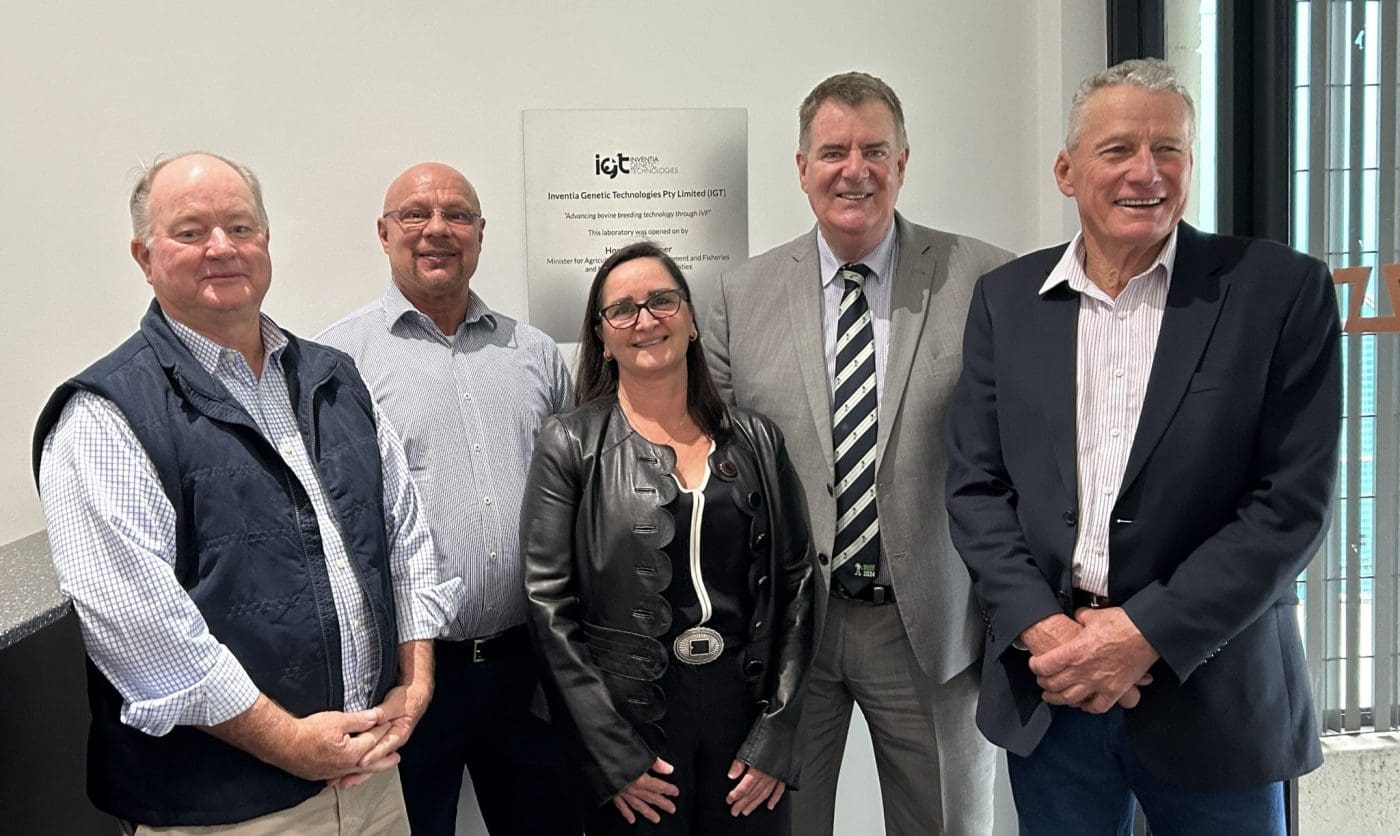
Queensland Agriculture Minister Mark Furner (second from right) celebrates the opening with some of the business owners (L to R) David Foote, Dr Julio Ribeiro, Patricia Medina Porto and Ced Wise.
THE nation’s oldest and largest company offering cattle IVF programs just got bigger; Inventia Genetic Technologies (IGT) moves into larger premises on Monday.
On Friday the Brisbane-based biotech firm invited guests to see Queensland’s Minister for Agriculture Mark Furner wrestle with a red ribbon and declare the new offices open.
Company chair and co-owner Ced Wise said: “This has been a huge investment for a small company like us and it tells you that we’ve got a real confidence in the IVF procedure. We think IVF has got a real future and we also think the cattle industry’s got a real future.”
It was the third expansion since the Australian-owned company was formed in 2012. The staff at the Brisbane HQ and Rockhampton office now total more than 20, many of them hailing from South American countries, particularly Brazil, the wellspring of bovine IVF knowledge.
The company is backed by several co-owners including artificial breeding expert Ced Wise, David Foote, Dr Julio Ribeiro and Patricia Medina Porto.
Chief operating officer Marcelo Stiaque said the bulk of the work currently is with Brahmans, followed by Angus, Ultrablacks and more recently Wagyu. How are the Wagyus performing? “In terms of oocytes (eggs), we get less,” he said. “But the conversion into embryos is as good as the bos indicus breeds.”
The new facility has a dedicated R&D space and the company already has plans to introduce robots to standardise treatments and allow mass-scale production. Marcelo said there is also the possibility of incorporating AI to predict the most successful oocytes for conversion.
“When you are talking on a global scale Brazil is different to the American, is different to Australia. Each country has their own peculiar things. It’s about finding what we can do to improve,” he said.
The R&D section will also be testing new packaging and new identification systems for embryos, as well at testing new forms of media used to maintain the oocytes during conversion.
The IGT team is also open to looking at other species and mentioned horses – particularly polo ponies – as a possibility.
Included in the new laboratory design is a training room to upskill existing staff and provide training pathways for new starters.
In his speech Ced Wise also discussed coupling IVF with genomics. “We can take biopsies of the embryos we produce here and be able to test those embryos before they go into the cow. We can also do genetic manipulation in the embryo.
“Suffice to say the technology is way ahead of the legislation. And there’s a good reason for that; it’s a bloody minefield. But the experimentation is still going on. Sooner or later the legislation will get up to speed where we can utilise at least some of those technologies.”
However, he shared some doubts over the role of genetics in restricting ruminant emissions. “We have people with lofty ideas of making the word sustainable in agriculture through IVF or changing the climate through IVF.
“My personal opinion is that we are not going to achieve that in our game. We’re not going to do that on our own.
“The only way we can do it is if we have the help of and maximise the genetics of the breeders that we work with… if we can make them more profitable (and) they increase their efficiencies through IVF by multiplying their best genetics,” he said”Making them more proftable in doing so, that makes their business more sustainable.
“It would be good to achieve all those things, but we will need the producers to help us on that road.
“And to do that we have to produce embryos as efficiently as possible, hence the new lab. That’s why we’re trying to do things better and better and better.”
Modern IVF started in the early 2000s, as the offspring of artificial insemination and a development beyond Fixed Time AI (FTAI) using synchronisation programs. He explained: “Multiple Ovulation Embryo Transfer (MOET) is not growing at all. It’s flattened. We’re not doing any less but it’s not growing. IVF worldwide is growing rapidly.
“And there’s quite a lot of reasons for that; one is you don’t have to treat the donor cow. You don’t have to AI the donor cow. You use a lot less semen in IVF than in MOET or AI. And you can do it without interrupting the cow’s reproductive cycle.”
IGT founder Dr Julio Ribeiro said: “We could potentially expand to different countries because Australia is the best country to expand the technology like this into south Asia, India, Indonesia, Malaysia. That’s why I opened this company in Australia.”
First priority, however, are domestic customers. The focus has been the eastern seaboard but recently the company went to WA.
Guests attending the launch included long-term customers such as David Bondfield who used IVF for the Palgrove herds, starting about 10 years ago. Now he and wife Prue have been using it to build genetic gain in their own Brangus and Ultrablack herds over the past year.
David said he saw the future of cattle genetics in animals capable of adapting to harsher conditions. “In this country it’s mostly a grass-fed, rangeland animal. So the driver behind that is how to make cattle adaptable to harsh and arid environments and to produce a product that a customer really wants to eat. So that’s our challenge.
“Animals that can physically survive and thrive in less than perfect conditions has to be an increasingly important trait.
“That’s a target for our breeding program – without a doubt – durability so they survive and reproduce and we then select the elite animal out of those. Our intent is to identify and multiply those animals and IVF is the perfect tool to do that.”
Attending from their property Karakara near Goomeri were Alan and Debbie Marshall. They have put their Angus and Ultrablacks twice through the IGT IVF program.
Other guests included visitors from Deepwater, NSW, Suzie Lockwood from the Superb Speckle Park stud and Jennie Coldham whose Coldwood Pastoral runs a contract recipient herd of mostly Angus.
The company’s dairy clients were represented by Joe Bradley and Christina Smith whose Brown Swiss cows supply milk to Malanda Dairy. The herd includes third-generation IVF progreny bred to sexed semen. Out of 30 calves, all but one have been heifers. “I’m pretty happy with that,” said Joe.
How does IVF work?
- Field technicians collect oocytes (eggs) from donor heifers and cows.
- Oocytes are identified, counted and graded in the field and transported to the laboratory.
- Selected semen is used to fertilise the oocytes up to 24 hours post-collection.
- Fertilised oocytes are cultured in specialised media under strict laboratory biosecurity.
- Embryos are graded and evaluated after seven days.
- High-quality embryos are loaded into straws for immediate use in recipient cows or for freezing.
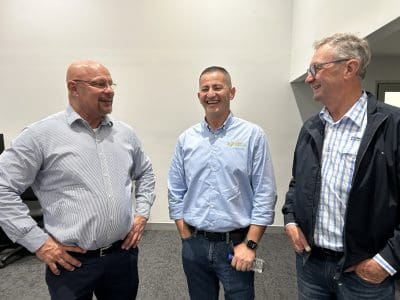
Long-standing customer David Bondfield (far right) in conversation with Dr Julio Ribeiro (left) and German Amaya.

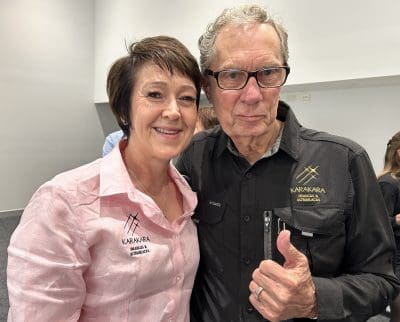
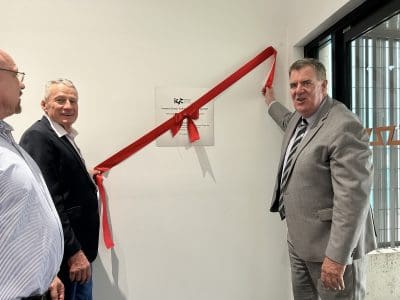
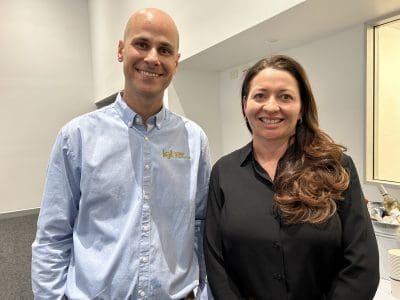
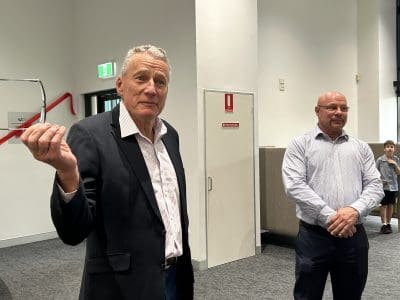
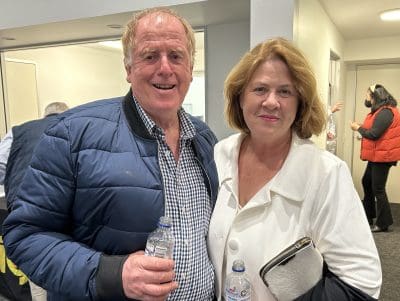
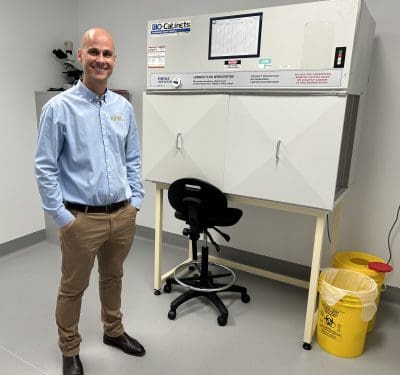
HAVE YOUR SAY